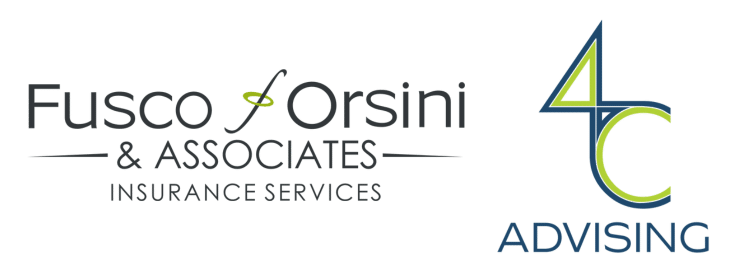California
Traffic Control and Flagging Company Insurance

or call us: (858) 384‑1506
Top 3 Recommended Policies

When managing traffic control and flagging operations in California, safety and risk management are paramount. These businesses face unique challenges, including high exposure to vehicle collisions in work zones and evolving regulatory landscapes. Understanding the right insurance coverage is essential to protect your company, employees, and clients from costly claims and operational disruptions.
Recent data reveals that 64 percent of highway contractors have experienced motor vehicles crashing into their construction work zones within the past year. This alarming statistic highlights the critical need for comprehensive insurance tailored to traffic control and flagging companies operating in California’s busy roadways. Source.
Understanding the Unique Risks for Traffic Control and Flagging Companies
Traffic control and flagging companies operate in environments where the risk of accidents is inherently high. Workers are often stationed close to live traffic, and the potential for vehicles to enter work zones unintentionally is significant. These risks translate into a higher possibility of liability claims, property damage, and even fatal injuries.
California reported 462 fatal work injuries in 2021, underscoring the dangers faced by workers in hazardous environments, including those involved in traffic management. These figures emphasize the importance of securing the right insurance coverage to mitigate financial exposure from workplace accidents Source.
Beyond physical risks, these companies must also navigate increased cargo theft, which surged by 600 percent between late 2022 and early 2023. Equipment and signage theft can disrupt operations and lead to unexpected replacement costs, making coverage for theft and vandalism a vital component of a robust insurance plan Source.
In addition to the physical dangers and theft concerns, traffic control and flagging companies face the challenge of managing public perception and maintaining community relations. Negative incidents, such as accidents or poorly managed traffic situations, can lead to public outcry and scrutiny, potentially damaging the company’s reputation. This aspect highlights the importance of not only operational safety but also effective communication and public engagement strategies to foster trust and transparency with local communities.
Moreover, companies must stay abreast of the evolving regulations and standards set by state and federal agencies. Compliance with the California Department of Transportation (Caltrans) guidelines, for instance, is crucial for ensuring safety and avoiding penalties. Regular training and certification for flaggers and traffic control personnel are essential to keep the workforce informed about the latest safety protocols and operational best practices, thereby reducing the likelihood of accidents and enhancing overall efficiency.
Key Insurance Coverages for Traffic Control and Flagging Companies
Given the high-risk nature of the work, several insurance policies are essential for traffic control and flagging companies in California:
- General Liability Insurance: Protects against third-party bodily injury and property damage claims, including accidents involving motorists entering work zones.
- Workers’ Compensation Insurance: Covers medical expenses and lost wages for employees injured on the job, a critical safeguard given the physical dangers of flagging work.
- Commercial Auto Insurance: Covers company vehicles used for transporting equipment and personnel, including liability and physical damage coverage.
- Equipment and Property Insurance: Protects against theft, vandalism, and damage to tools, signs, and machinery essential to operations.
- Professional Liability Insurance:
Also known as errors and omissions insurance, this covers claims arising from mistakes or negligence in traffic control planning or execution.
Insurance Market Challenges and Regulatory Changes in California
California’s insurance market has faced significant turbulence recently, affecting availability and pricing for traffic control and flagging companies. One notable development is the state insurance commissioner’s decision to prohibit insurers from using catastrophe modeling to predict potential future losses. This regulatory change aims to protect consumers but has added complexity to underwriting and rate setting Source.
Additionally, the approval process for new insurance rate filings has slowed dramatically. Where responses once took 80 to 90 days in 2012, insurers now face delays averaging 350 days in 2023. These extended timelines can hinder companies’ ability to secure timely coverage adjustments, especially in a market with rising claims and evolving risks Source.
The insurance crisis in California has prompted industry experts to propose six key solutions aimed at addressing the most pressing issues quickly. While these reforms are still in progress, traffic control companies should stay informed and work closely with brokers to navigate the shifting landscape Source.
How These Market Conditions Affect Traffic Control Companies
Insurance premiums for traffic control and flagging companies may rise due to increased claims and regulatory uncertainty. Delays in rate approvals can also limit the availability of new or specialized coverage options. Companies should plan for these challenges by maintaining strong safety programs and documenting risk management efforts to demonstrate lower risk profiles to insurers.
Moreover, the heightened scrutiny from regulators has led to a more cautious approach from insurance providers, who are increasingly evaluating the historical performance of traffic control companies before issuing policies. This trend underscores the importance of maintaining comprehensive records of safety incidents and training programs. Companies that can showcase a commitment to safety and risk mitigation may find themselves in a better position to negotiate favorable terms with insurers, even amidst the challenging market conditions.
In addition to the financial implications, the evolving regulatory landscape may also necessitate changes in operational practices for traffic control firms. Companies may need to invest in new technologies or training programs that align with updated safety standards and compliance requirements. By proactively adapting to these changes, businesses can not only enhance their safety profiles but also position themselves as leaders in an increasingly competitive marketplace.

Mitigating Risks Through Safety and Technology
While insurance is crucial, preventing accidents and losses remains the best way to control costs. Recent studies on automated driving systems (AV) show promising safety performance, with supervised AVs exhibiting crash rates nearly equivalent to human drivers. Although this technology is still emerging, it points toward future opportunities for traffic control operations to integrate automation and reduce human error Source. The potential for AVs to communicate with one another and with traffic management systems could lead to a more cohesive and responsive traffic environment, further enhancing safety measures and efficiency on the roads.
In the meantime, investing in thorough worker training, clear signage, and effective flagging protocols can reduce incidents. Given that 64 percent of highway contractors have experienced vehicle crashes in work zones, proactive measures are essential to protect workers and minimize liability. Additionally, the use of advanced technology such as drones for aerial surveillance can help monitor work zones more effectively, allowing for real-time adjustments and quicker responses to potential hazards. By leveraging technology in conjunction with traditional safety practices, companies can create a safer working environment, ultimately leading to reduced costs and improved project timelines.
Addressing Insurance Fraud Risks
Insurance fraud remains a significant concern in the industry, ranking as one of the largest categories of white-collar crime after tax evasion. Fraudulent claims can drive up premiums and complicate claims processing for honest businesses. Traffic control companies should implement strict documentation and reporting procedures to help insurers detect and prevent fraud Source. Furthermore, utilizing data analytics and machine learning can enhance the ability to identify patterns indicative of fraudulent activity, enabling companies to act swiftly and decisively against potential scams.
Moreover, fostering a culture of transparency and accountability within the organization can deter fraudulent behavior. Regular audits and employee training on ethics and compliance can reinforce the importance of integrity in business practices. Establishing a whistleblower program can also empower employees to report suspicious activities without fear of retaliation, creating an environment where honesty is valued and fraud is less likely to thrive. By taking these proactive steps, companies can not only protect their bottom line but also enhance their reputation in the industry.
Coverage Comparison: Essential Policies for Traffic Control Companies
| Coverage Type | What It Covers | Why It Matters |
|---|---|---|
| General Liability | Third-party injury and property damage claims | Protects against costly lawsuits from accidents in work zones |
| Workers’ Compensation | Medical and wage benefits for injured employees | Essential for compliance and protecting workers in hazardous roles |
| Commercial Auto | Liability and physical damage for company vehicles | Coverage for vehicles transporting equipment and personnel |
| Equipment & Property | Theft, vandalism, and damage to tools and signage | Protects investments in essential operational assets |
| Professional Liability | Errors, omissions, and negligence claims | Covers mistakes in traffic control planning or execution |
In addition to the fundamental coverages listed above, traffic control companies should also consider the importance of Environmental Liability insurance. This type of coverage addresses potential claims related to pollution or environmental damage that may arise during construction or roadwork activities. Given the nature of traffic control, where materials and equipment are often used in outdoor settings, having this protection can safeguard against unforeseen incidents that could lead to significant financial repercussions. Environmental Liability insurance not only protects the company but also demonstrates a commitment to responsible practices, which can enhance a company's reputation in the community.
Furthermore, as technology continues to evolve, traffic control companies may also benefit from Cyber Liability insurance. With the increasing reliance on digital tools for traffic management and data collection, the risk of cyberattacks and data breaches has become a real concern. This coverage can help mitigate the financial fallout from such incidents, covering costs related to data recovery, legal fees, and even public relations efforts to restore trust with clients and the public. By investing in comprehensive insurance solutions, traffic control companies can ensure they are well-prepared for both traditional and modern risks, ultimately leading to a more resilient business model.

Final Thoughts on Insurance for California Traffic Control and Flagging Companies
Operating a traffic control and flagging company in California requires careful attention to risk management and insurance coverage. The high frequency of vehicle crashes in work zones, combined with regulatory challenges and rising theft rates, means companies must be proactive in securing comprehensive protection.
Working with knowledgeable insurance professionals to tailor policies to your specific operations can help you avoid gaps in coverage. Staying current on market changes and investing in safety initiatives will also contribute to lower premiums and smoother claims experiences.
Traffic control companies that understand their risks and insurance options are better positioned to protect their business, workers, and clients in a demanding and dynamic environment.
Moreover, the importance of continuous training for flaggers and traffic control personnel cannot be overstated. Regular training sessions not only enhance the skills of the workforce but also instill a culture of safety that permeates the organization. By ensuring that employees are well-versed in the latest traffic management techniques and safety protocols, companies can significantly reduce the likelihood of accidents and improve their overall safety record, which is a critical factor in securing favorable insurance terms.
Additionally, the implementation of advanced technology, such as traffic management software and real-time monitoring systems, can further mitigate risks. These tools allow companies to analyze traffic patterns, optimize the placement of signage and barriers, and respond swiftly to changing conditions. By leveraging technology, traffic control companies can not only enhance operational efficiency but also demonstrate to insurers their commitment to proactive risk management, potentially leading to more competitive insurance rates and better coverage options.
Frequently Asked Questions
Q: What insurance is mandatory for traffic control companies in California?
A: Workers’ compensation is required by law, and general liability is highly recommended to cover third-party claims.
Q: How can traffic control companies reduce insurance costs?
A: Implementing strong safety programs, maintaining clean claims histories, and working with brokers to find tailored coverage can help lower premiums.
Q: Does commercial auto insurance cover vehicles used for flagging operations?
A: Yes, commercial auto insurance covers company vehicles used for transporting equipment and personnel, including liability and physical damage.
Q: How does the recent California regulation on catastrophe modeling affect insurance?
A: Insurers cannot use catastrophe models to predict future losses, which may impact how rates are set and coverage is offered.
Q: What should a company do if equipment is stolen from a work zone?
A: Report the theft promptly and ensure equipment insurance covers such losses to recover replacement costs.
Q: Are automated driving systems currently used in traffic control?
A: While still emerging, automated driving systems show safety promise but are not yet widely adopted in traffic control operations.
Q: Why is insurance fraud a concern for traffic control companies?
A: Fraudulent claims increase costs for all insured parties, so companies must maintain strict documentation to prevent and detect fraud.
Contact Us
Phone
Location



